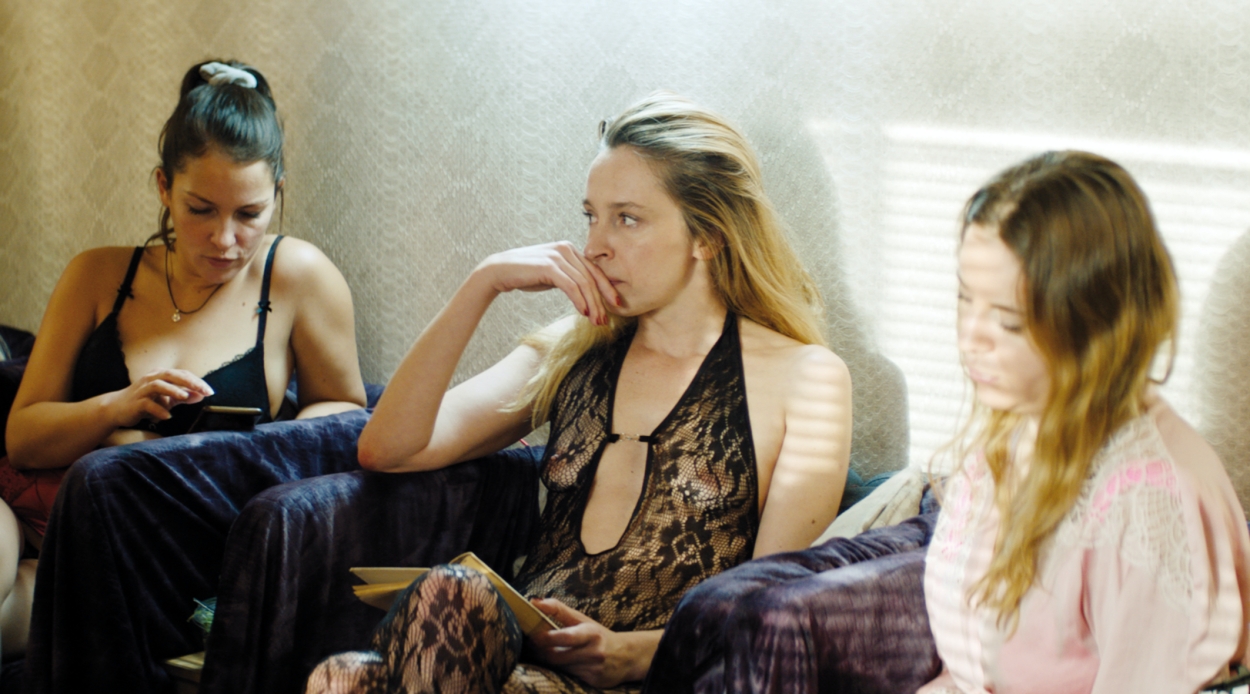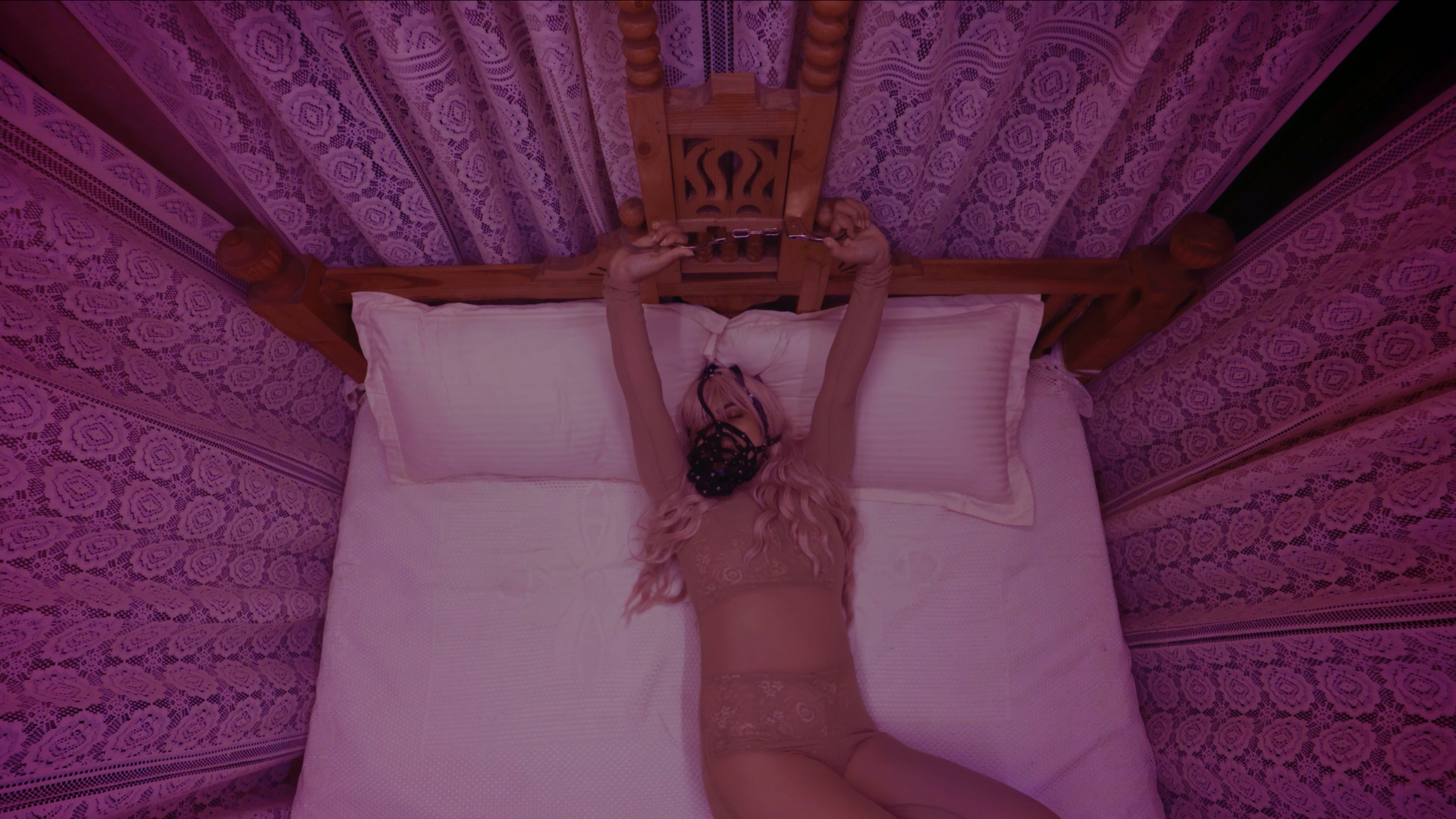Trzecie Oko: Porywaczki ciał
Tegoroczne Trzecie Oko patrzy jak dziewczyna, a reżyserki pokazywanych w sekcji filmów – niczym porywaczki ciał – uwalniają swoje bohaterki z utartych wzorów patrzenia na kobiecą cielesność i seksualność.
Porywają kobiece ciała ze stereotypowych skryptów i ról: bezbronnej ofiary, drapieżnej femme fatale czy dominującej superbohaterki. Będzie to nieoczywiste i odświeżające spojrzenie.
Studentki, które przychodzą na moje zajęcia, są blisko spokrewnione ze wszystkimi niepoprawnymi dziewczynami, które za bardzo interesują się swoimi ciałami, seksem i przyjemnością – pisała w 1992 roku Kathy Acker – można się od nich dużo nauczyć, jak mieć przyjemność i jak fajne jest kobiece ciało. Wszystkim niepoprawnym dziewczynom, które interesują się „za bardzo” i pilnie zgłębiają kwestie kobiecej przyjemności, poświęcamy tegoroczne Trzecie Oko – sekcję dedykowaną kobiecym spojrzeniom i kobiecym głosom w kinie. Miejsce spotkania oraz dialogu kina i z feministyczną teorią, i praktyką.

Pleasure, reż. Ninja Thyberg
Będzie sporo nagości, hedonizmu, fantazji, trochę obsceny i eksperymentów, choreografii ciał w rozmaitych kształtach i konfiguracjach. Dużo przyjemności i pozytywnej seksualności wynegocjowanej w patriarchalnym świecie. Ale też pytań o granice, o wstyd czy konsekwencje podjętych decyzji oraz cenę, jaką trzeba zapłacić za wyłamanie się z mieszczańskiego mainstreamu. I czy faktycznie trzeba, bo może wcale nie jest to aż tak wysoka cena, a demonizowanie jej jest kolejnym sposobem dyscyplinowania niegrzecznych kobiet. A pod płaszczykiem troski kryje się zwykły slut shaming.
Jak wyglądają ciała widziane kobiecym spojrzeniem? Przyjrzymy się, jaką formę przyjmują erotyczne sceny w obiektywie kobiet. Czy i jak różnią się one w przedstawianiu nagości i intymności? Gdzie przebiega granica między erotyką a pornografią i czy pornografia może być realizowana na kobiecych warunkach? Jak wzorce filmowych ciał i praktyk seksualnych wpływają na relacje w prawdziwym życiu? I w końcu, jak kobiety pokazują swoja seksualność i reżyserują pożądanie w prawdziwym i cyfrowym świecie? W amatorskich filmach, mediach społecznościowych i własnych sypialniach. Parafrazując klasyczny tekst Peaches: „I am only double A, but thinking triple X”.
Kobiece spojrzenie podważające wszechobecną męską perspektywę – w najogólniejszym sensie – oznacza dzieło tworzone z kobiecego punktu widzenia i z feministyczną wrażliwością. Jednak założenie, że wszystkie filmy kręcone przez kobiety są automatycznie feministyczne oraz że są nośnikiem kobiecego spojrzenia, jest zbyt dużym uproszczeniem.
Sama definicja kobiecego spojrzenia przysparza trudności. Czy female gaze to odwrócenie słynnego male gaze (pojęcia stworzonego przez Laurę Mulvey w słynnym eseju z 1975 roku „Przyjemność wzrokowa a kino narracyjne”), czy opiera się jednak na innej mechanice? Trudno dokonać prostej zamiany patrzącego na patrzącą, bo kobiece postawy, zachowania wykształcają się pod stałą kuratelą oraz obserwacją mężczyzn. Kobieta jest jednocześnie obserwowana i obserwuje, ponieważ cały czas sprawdza samą siebie. Mężczyźni patrzą na kobiety. Kobiety patrzą na siebie, będąc przedmiotami oglądu. Widziałam go patrzącego na mnie – zdanie to jest kwintesencją kobiecej kondycji bycia obserwowaną przez mężczyzn.
Feministyczne krytyczki młodszego niż Mulvey pokolenia twierdzą, że przechwycenie męskiego spojrzenia przez kobietę anuluje je. Susan Bowers nazywa to efektem Meduzy. Autorka książki „Medusa and the Female Gaze” uważa, że postać Meduzy jest symbolem kobiecej mocy i kobiecej wolności seksualnej. Meduza to interesujący, żeński rodzaj potwora, bo rzuca wyzwanie patriarchalnej kulturze poprzez wyrażanie seksualności i dominacji nad mężczyznami. Nie tylko jej spojrzenie dosłownie zabija, ale jej oczy reprezentują niewidzialny rodzaj siły. Kiedy kobieta widzi, że jest przedmiotem męskiego spojrzenia i odwzajemnia je, odrzuca własne uprzedmiotowienie – argumentuje Bowers.
Efekt Meduzy zachodzi w świetnym debiucie Ninjy Thyberg Pleasure, gdzie kulisy pornobiznesu oglądamy oczami początkującej gwiazdki Belli Cherry. Kamera pokazuje dokładnie to, co widzi Bella w czasie kręcenia najbardziej hard core’owych scen. Nie zmienia to ich brutalności, ale nadaje jej podmiotowość. Jej ciało na planie pornograficznego filmu staje się w rękach mężczyzn przedmiotem, ale nie da się zredukować jej spojrzenia.

Szczęście, reż. Henrika Kull
W podobnym miejscu, gdzie seks jest usługą, a kobiece ciało towarem, rozgrywa się dramat Henriki Kull Szczęście. Reżyserka, która od lat eksploruje zjawisko pracy seksualnej, wprost pokazuje jej fizyczny wymiar. Bez aluzji, sensacji czy budowania aury tajemnicy lub niebezpieczeństwa, jak ma to zazwyczaj miejsce w kinie. Brak klisz w pokazywaniu seksu bierze się również z faktu, że prezentowany jest on z punktu widzenia pracujących w branży kobiet, a nie mężczyzn – ich faktycznych lub potencjalnych klientów albo przynajmniej ciekawskich voyeurów. Thyberg i Kull pokazują też, że przyciąganie spojrzeń jest przywilejem, a opanowanie taktyk przynęty umiejętnością. W porno i pracy seksualnej zostaje obnażone to, do czego niechętnie się przyznajemy: jak bardzo kobiece ciało jest walutą na kapitalistycznym rynku i jak bardzo jego rynkowa wartość oparta jest na liczbie przyciągniętych spojrzeń.
W Fucking With Nobody Hannaleena Hauru patrzy, jak zjawisko kobiecości jest negocjowane w mediach społecznościowych. Może stanowić źródło emancypacji, ale może mieć też mroczny aspekt – eksploatacji ciała w duchu konsumpcyjnego kapitalizmu. Krok po kroku pokazuje, jak reżyseruje romantyczny skrypt, w przewrotnym filmie o budowaniu intymności, ustawieniach prywatności w związkach i meandrach feminizmu. Hauru mnoży punkty widzenia, bo kobiece spojrzenie to spojrzenie odwzajemnione. Kluczowa jest zasada wzajemności – pisze Ginette Vincendeau – gestem feministycznym jest równa relacja władzy między osobą przedstawianą a osobą przedstawiającą. Ważniejszy od pojedynku spojrzeń jest głos. Gdy kobiety mogą w filmach mówić o swoich ciałach, a nie są tylko oglądane przez mężczyzn, okazuje się, że w przedstawieniach ciał chodzi nie o ciała, lecz o związane z nimi przeżycia i emocje.
Jak patrzy kobieta, kiedy patrzy na kobietę, a jak, kiedy przygląda się sobie? Na czym polega przyjemność tego przejrzenia się w sobie nawzajem? Katrina Daschner w Ukrytych w świetle, gdzie queeruje słynną powieść Jak we śnie wiedeńskiego prowokatora Arthura Schnitzlera (która była także inspiracją dla Oczu szeroko zamkniętych Stanleya Kubricka), zamienia tekst w filmowy spektakl, w którym wszystko jest erotycznie naładowane: od detali architektonicznych, przez tkaniny zasłon i motywy tapet, po nagą i ubraną skórę.

Mój pies jest chory, reż. Sapna Bhavnani
Reżyserowaniem fantazji zajmują się bohaterki filmów Oczy precz Hadas Ben Aroyi i Mój pies jest chory Sapny Bhavnani – obie chcą eksplorować swoją seksualność. Doświadczyć więcej i testować różne role. Są gotowe spróbować wszystkiego, ale nie są w stanie przewidzieć, jak te doświadczenia na nich wpłyną. Introspekcje i fantazje to spojrzenie skierowane do wewnątrz kobiecego ciała, badające jego afekty i pragnienia. Pytanie o kobiece spojrzenie to też pytanie o to, co widzimy, kiedy patrzymy. Kiedy odwracamy wzrok? A kiedy zamykamy oczy?
Ewa Szabłowska, kuratorka
Matronką sekcji Trzecie Oko jest G’rls Room.

